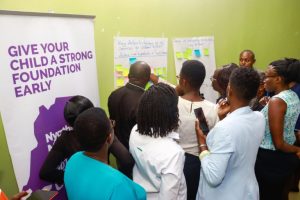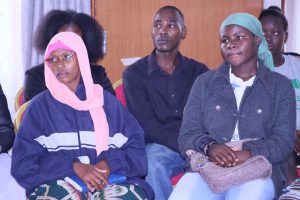Evidence is crucial in education. It is important to understand which teaching practices and innovations work best, where and when they work well, and how they work under different circumstances. By scrutinizing education evidence, we can integrate proven innovations into our education systems, promoting equity and quality. However, education policies often undervalue the role of evidence in teaching and learning, especially in Kenya. The education sector relies heavily on external research for decision-making, which may not align with the needs of teachers. Incorporating practitioner research can enrich the education system and provide more relevant and accessible information.
To address this issue, there is a need to shift towards a research culture like it happens in the medical field. This involves incorporating both external research and practitioner (teacher) research to enrich the education system. Like in medicine, there are three levels of practitioner evidence required for an effective education system, as outlined by Masters (2018). I had a chat with two teachers to collaborate these sources of evidence.
Evidence to determine whether learning is taking place.
The traditional approach to teaching assumes that all students are the same, while evidence-based teaching and learning takes a personalized approach that considers the individual needs of each student. This is achieved through assessments that provide evidence of each student’s progress and learning needs, positioning them appropriately in the learning process. To gain a deep understanding of a student’s learning progress, a thorough diagnostic investigation may be necessary to address obstacles to further progress. Evidence-based teaching and learning aims to personalize the learning experience and provide targeted learning opportunities that lead to better learning outcomes.

Evidence to inform teaching strategies and interventions.
After assessing the learning levels of their students, the next step for a teacher is to encourage further learning by asking questions like: What measures are required to improve student comprehension and skill? Which teaching strategies have been proven effective in practice, for which students, and under what circumstances? The answers to these questions can only be found through rigorous and systematic classroom research, combined with professional teaching experience. Since teachers teach students in specific subjects, they can benefit from researching how students learn those subjects. Evidence-based educational practices may take the form of general solutions like “individualized learning,” “early years intervention,” “metacognition,” “homework,” “peer tutoring,” and “feedback.” However, these general solutions must be understood and executed in the context of each subject. For example, what kind of homework and feedback is best for each student, and is most suitable and when should it be given? Teachers require evidence about the best ways to implement effective teaching strategies and interventions in subject-specific contexts.

Evidence to evaluate student progress and teaching effectiveness.
Evidence of learning progress is important to evaluate teaching effectiveness and measure success. Defining learning success in terms of progress helps to establish whether individuals are learning effectively or not. Progress information provides an indicator of teaching effectiveness and helps evaluate educational policies, programs, and methods. Education reforms need access to quality research-based evidence, teacher professional judgment, and feedback from students. The education system should incorporate feedback mechanisms using tools like standardized tests and teacher self-assessment. Educational practitioners and professionals should adopt action research to improve their pedagogy over time.








You hɑvе mаdе ѕome really gߋod poіnts there.
I couldn’t resist commenting. Exceptionally well written!
This is a topic that is close to my heart… Cheers! Exactly where are your contact
details though?
Everyone loves what you guys are up too. This kind of clever work and exposure!
Keep up the very good works guy
Fabulous, what a website it is! This blog gives useful information to us,
keep it up.
pepek